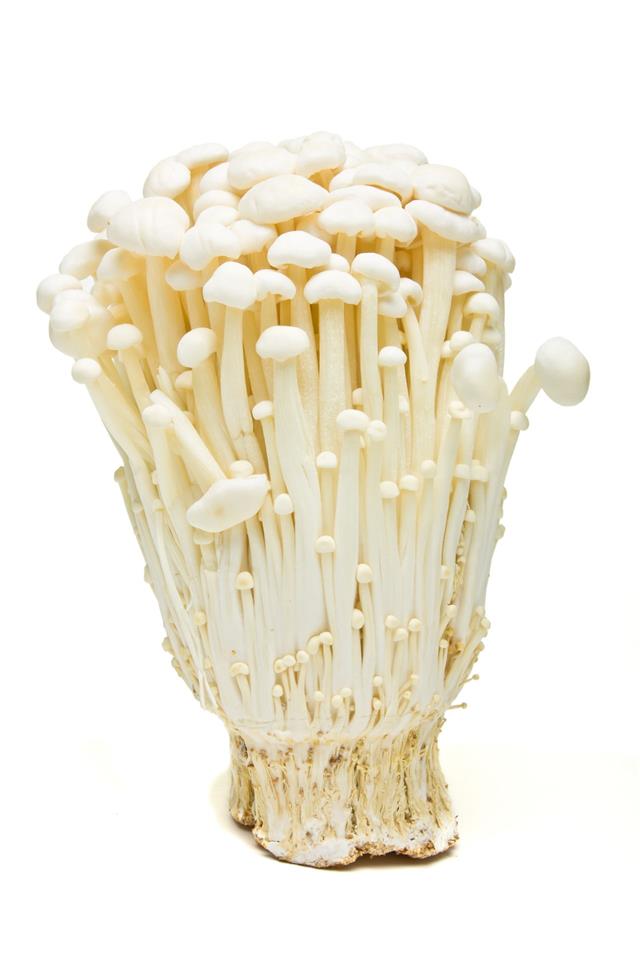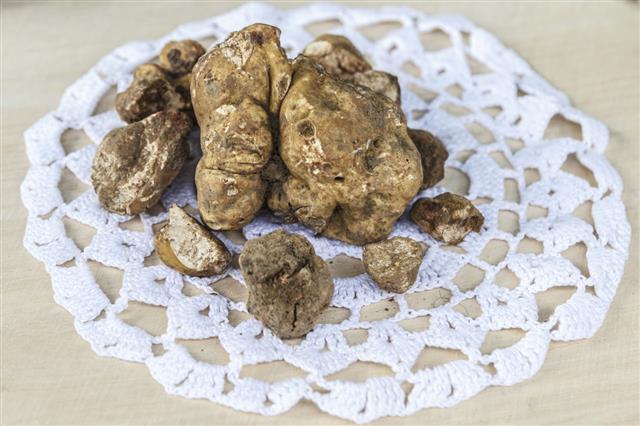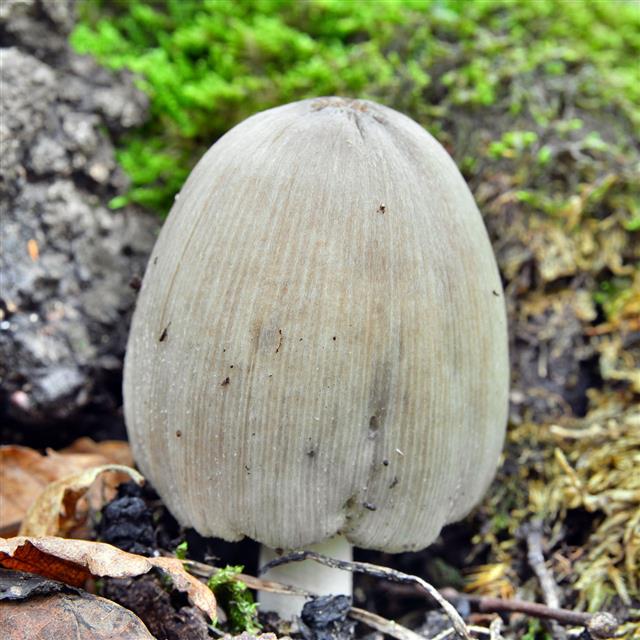
Mushrooms are extremely popular eatables and are used profusely in cuisines the world over. Here’s a look at different types of edible mushrooms that are used widely today.
Five things to be kept in mind before buying, picking, or consuming mushrooms:
- Always buy good quality mushrooms from reliable shops or eat them at renowned restaurants. Opt out of shady places.
- Certain wild poisonous mushrooms resemble other wild non-poisonous varieties very closely. One needs real good knowledge of mushrooms in order to be able tell the two apart. Do not consume wild shrooms that are not cultivated without being sure of what you are eating. It could prove to be severely sickening or even FATAL.
- Always clean mushrooms thoroughly before consuming them – raw or cooked. It is not an option.
- The mushrooms listed below have been identified as edible, but there are certain conditions that come into play when it comes to the edibility of most of these species. Some are life-threatening when eaten raw, but delectable and safe when parboiled optimally. Some may give violent allergic reactions to certain people. So, find out everything you need to about a particular mushroom species you are about to try out. Better safe than sorry.
- Studies are still being conducted on a lot of these mushrooms listed below and a lot is yet to be discovered. If you are a regular mushroom-junkie, keep an eye out for new information on the various species.
Commercially Cultivated Fungi
1.
- Cantharellus Cibarius
- (Common names: Chanterelle, Girolle, Golden chanterelle)
2.

- Craterellus Tubaeformis
- (Common names: Funnel Chanterelle, Winter mushroom, Yellowfoot)
3.

- Craterellus Cornucopioides
- (Common names: Black chanterelle, Black trumpet, Horn of plenty, Trompette de la Mort)
4.

- Clitocybe Nuda
- (Common names: Blue stalk mushroom, Wood blewit or blewitt)
- May cause allergic reactions. Exercise extreme caution.
- Never to be eaten raw; always after cooking. Brew in stews or sauté in butter.
5.

- Boletus Edulis
- (Common names: Cep, King bolete, Penny bun, White mushroom (by Russians), Wolf mushroom (in Albanian), Cèpe (French name), Steinpilz (German name), Fungo Porcino or Porcini (Italian name))
6.

- Grifola frondosa
- (Common names: Hen-of-the-wood, Ram’s head, Sheep’s head, Signorina, Maitake (Japanese name))
- May cause allergic reactions. Exercise extreme caution.
7.

- Gyromitra Esculenta
- (Common name: False morel)
- May cause allergic reactions. Exercise extreme caution.
- NEVER to be eaten raw; always after parboiling fresh mushrooms twice in a lot of water. Use fresh water in 3:1 ratio both times. May prove fatal if eaten raw.
8.

- Hericium erinaceus
- (Common names: Bearded Hedgehog Mushroom, Bearded Tooth Fungus, Bearded Tooth Mushroom, Lion’s Mane Mushroom, Pom pom mushroom, Satyr’s Beard)
9.

- Hydnum repandum
- (Common names: Hedgehog mushroom, Sweet tooth fungus, Wood Hedgehog, Urchin of the woods)
10.

- Cortinarius caperatus
- (Common name: Gypsy mushroom)
11.

- Lactarius deliciosus
- (Common names: Red pine mushroom, Saffron milk cap)
12.

- Tricholoma matsutake
- (Common name: Pine mushroom, Matsutake (Japanese name), Song rong (Chinese name))
13.

- Lentinula edodes
- (Common name: Shiitake)
- May cause allergic reactions. Exercise caution.
14.

- Agaricus bisporus
- (Common names: Button mushroom, Champignon mushroom, Common mushroom, Crimini mushroom, Cultivated mushroom, Italian brown, Italian mushroom, Portobello mushroom [once mature], Roman brown mushroom, Swiss brown mushroom, Table mushroom, White mushroom)
15.

- Volvariella volvacea
- (Common name: Paddy straw mushroom, Straw mushroom, Cǎogū (Chinese name),
Kabuteng saging (Filipino name), Hed fang (Thai name), Nấm rơm (Vietnamese name))
16.
- Flammulina velutipes
- (Common names: Enokidake, Enokitake, Golden needle mushroom)
17.

Hypsizygus tessellatus
Two varieties are called
- Buna-shimeji
(Common names: Brown Beech Mushroom, Beech Mushroom, BeechBrown Clamshell Mushroom) - Bunapi-shimeji
(Common names: White Beech Mushroom, White Clamshell Mushroom)
18.

- Ganoderma lucidum
- ( Reishi (Japanese name), Língzhi (Pinyin nam), Linh chi (Vietnamese))
19.

- Auricularia auricula-judae
- (Common names: Jelly ear Jew’s ear)
- Needs to be washed thoroughly before use.
20.

- Sparassis crispa
- (Common name: Cauliflower mushroom)
21.

- Pleurotus eryngii
- (Common names: Boletus of the steppes, French horn mushroom, Trumpet royale, King oyster mushroom, King trumpet mushroom, Cardoncello (Italian name), Eringi (Japanese name), Saesongi peoseot (Korean name), xìng bào gū/cì qín gū/cì qín cè ěr (Chinese name))
22.

- Morchella
- (Common name: Morels)
Extreme caution must be exercised while collecting this variety of mushrooms so as to avoid the accidental collection of poisonous early false morels or Verpa bohemica. Even though eaten in some parts of the world, Verpa bohemica is known to cause poisoning when eaten excessively.
23.

- Morchella conica var. deliciosa
- (Common names: Black morel)
- May cause allergic reactions. Exercise extreme caution.
24.

- Morchella esculenta var. rotunda
- (Common names: Common morel, Morel, Morel mushroom, Sponge morel, True morel, Yellow morel)
- May cause allergic reactions. Exercise extreme caution.
25.
- Tuber
- (Common name: Truffle)
The edible varieties that are widely cultivated as follows:
26.
- Tuber uncinatum
- (Common names: Burgundy truffle)
27.
- Tuber magnatum
- (Common name: Piemont white truffle)
- Terfezia (Common name: Desert truffle)
- Tuber indicum (Common name: Chinese black truffle)
- Tuber melanosporum (Common name: Périgord truffle)
- Tuber borchii
- Tuber brumale
- Tuber mesentericum (Common name:The Bagnoli truffle)
- Tuber aestivum (Common name: Summer or St. Jean truffle)
Other Edible Wild Fungi
1.

- Amanita caesarea
- (Common name: Caesar’s Mushroom)
2.

- Armillaria mellea
- (Common name: Honey fungus)
3.

- Boletus badius
- (Common name: Bay bolete)
- May cause allergic reactions. Exercise extreme caution.
4.

- Clavariaceae
- (Common names: Antler fungi, Finger fungi, Spaghetti mushroom, Worm mold)
5.

- Calvatia gigantea
- (Common name: Giant puffball)
6.

- Clavulinaceae
- (Common name: Clavulina)
7.
- Coprinus comatus
- (Common names: Lawyer’s wig, Shaggy ink cap, Shaggy mane)
- Should be consumed fresh, BEFORE the gills turn black and NEVER alongside alcohol.
8.
- Fistulina hepatica
- (Common names: Beefsteak fungus, Beefsteak polypore, Ox tongue)
9.

- Laetiporus sulphureus
- (Common names: Chicken-of-the-woods, chicken polypore, Sulphur polypore, Sulphur shelf)
- May cause allergic reactions. Exercise extreme caution.
10.

- Leccinum aurantiacum
- (Common name: Red-capped scaber stalk)
11.

- Leccinum scabrum
- (Common name: Birch bolete)
12.

- Lepiota procera
- (Common name: Parasol Mushroom)
13.

- Macrolepiota procera
- (Common name: Parasol mushroom)
14.

- Tricholoma terreum
- (Common names: Dirty tricholoma, Gray knight)
- To be eaten fresh, within 2 days of harvesting.
15.

- Suillus granulatus
- (Common names:Granulated bolete, Weeping bolete)
- Discard tubes BEFORE cooking.
16.
- Suillus luteus
- (Common names: Slippery Jack, Sticky bun)
- May cause allergic reactions. Exercise extreme caution.
- Discard tubes and glutinous cuticle BEFORE cooking.
17.

- Pleurotus ostreatus
- (Common names: Gray oyster mushroom, Oyster mushroom, Oyster shelf, Tree oyster mushroom, Píng gū (Chinese name), Sadafi (Irani name), Hiratake (Japanese name), Chippikkoon (Malayalam), Nấm sò (Vietnamese name))
18.

- Amanita muscaria
- (Common names: Fly agaric, Fly amanita)
- May cause allergic reactions. Exercise extreme caution.
- Never to be eaten raw; always after finely dicing or thinly slicing mushrooms and then parboiling in a lot of water.
19.
- Coprinopsis atramentaria
- (Common names: Common ink cap, Inky cap)
- Never to be consumed along with alcohol. Will prove to be highly poisonous otherwise.
20.

- Tricholoma equestre OR Tricholoma flavovirens
- (Common names: Man on horseback, Yellow knight, Canari (French name), Grünling (German name), Gąska zielonka (Polish name))
- Consumption of this mushroom – more than thrice in a week – may lead to severe poisoning.
21.
- Agaricus campestris
- (Common names: Field mushroom, Meadow mushroom)
22.

- Russula cyanoxantha
- (Common name:Charcoal burner)
23.

- Russula emetica
- (Common names: Emetic russula, The sickener, Vomiting russula)
- Never to be eaten raw; always after parboiling in a lot of water. Consumption not recommended these days.
24.

- Russula virescens
- (Common names: Green-cracking Russula, Green brittlegill, Quilted green Russula)
25.

- Russula xerampelina
- (Common names: Crab brittlegill, Shrimp mushroom)
26.

- Polyporus squamosus
- (Common names: Dryad’s saddle, Pheasant’s back mushroom)
- Chroogomphus rutilus (Common names: Pine-spikes, spike-caps, Brown slimecap, Copper spike)
- Cortinarius variicolor
- Hygrophorus chrysodon
- Lactarius salmonicolor
- Lactarius subdulcis (Common name: Mild milkcap)
- Lactarius volemus (Common name: Voluminous-latex milky, Weeping milk cap)
- Laccocephalum mylittae (Common name: Blackfellow’s bread, Native bread)
- Rhizopogon luteolus
- Suillus bovinus
- Suillus tomentosus (Common name: Blue-staining Slippery Jack, Poor Man’s Slippery Jack, Woolly-capped Suillus)
















